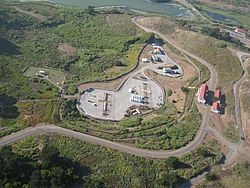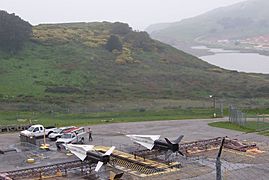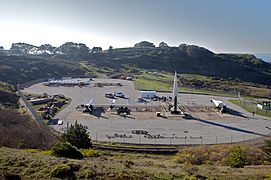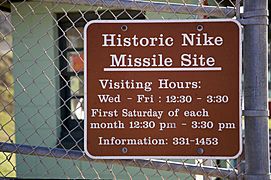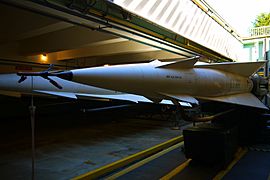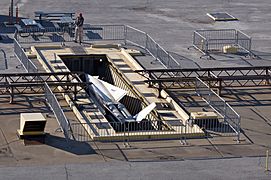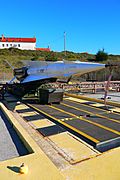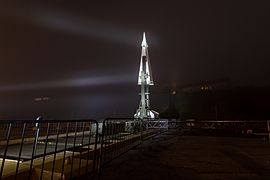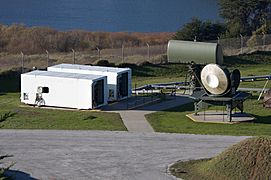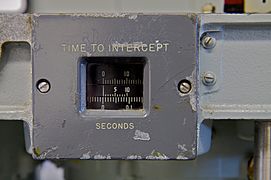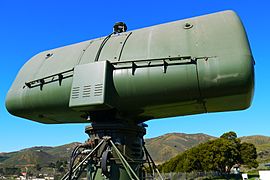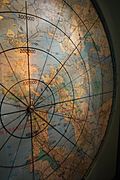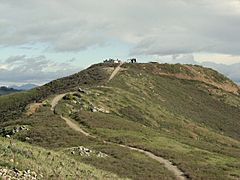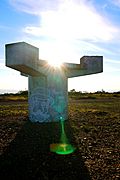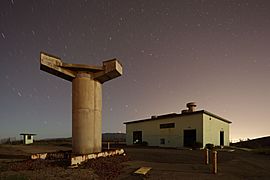Nike Missile Site SF-88 facts for kids
SF-88 is a former Nike Missile launch site. It is located at Fort Barry in the Marin Headlands, just north of San Francisco, California. This site was opened in 1954.
Its main job was to protect the people and military bases in the San Francisco Bay Area. This was during a time called the Cold War. The threat was from Soviet bomber aircraft.
The site first used Nike Ajax missiles. In 1958, it was updated to also use stronger Nike Hercules missiles. SF-88 closed in 1974 but was not torn down. Today, it is part of the Golden Gate National Recreation Area. You can visit it on Saturdays from 12:30 PM to 3:30 PM. Tours happen every 45 minutes. On the first Saturday of each month, there's a special open house. You might even meet Nike veterans there! Volunteers help restore the site on other Saturdays.
Contents
What Was the Nike Missile Site SF-88?
The Nike missile site SF-88 was a key part of America's defense. It was built to shoot down enemy planes. These planes might have tried to attack during the Cold War. The Cold War was a period of tension between the United States and the Soviet Union.
Building a Secret Defense Base
Construction for SF-88 began before July 7, 1954. The San Francisco Chronicle newspaper reported on it. They mentioned four Nike missile sites being built in the area. These included sites at Forts Baker, Barry, and Cronkhite.
Captain Henry Paine took charge of Battery A on October 1, 1954. This was a new military unit. The first missile launchers were ready by October 28, 1954. These early missiles were called Nike-Ajax.
Upgrading the Missiles
In November 1958, the site got an upgrade. The Nike-Ajax missiles were replaced. Newer, more powerful Nike-Hercules missiles were installed. These missiles could travel faster and farther. They could also carry a different type of warhead.
From Active Duty to History
SF-88 stopped being an active military site in 1974. This was part of a larger plan to close Nike missile sites across the United States. A special agreement, called SALT I, allowed one missile site to be kept by each country. This was for historical reasons. SF-88 was chosen for the United States.
The Army agreed to this plan. The land was given to the National Park Service in 1974. It was meant to be a "Historic Memorial to Air Defense." Army experts stayed to explain how the Nike system worked. They would teach park staff about it.
The final transfer to the National Park Service happened on February 12, 1976. No explosives or secret information were part of the transfer.
Bringing the Past Back to Life
In the early 1980s, a group of volunteers started restoring the base. They began by pumping water out of the underground missile storage area. Another group, led by Colonel Bud Halsey, took over in the mid-1980s.
These volunteers cleaned up rust and found old equipment. They even found enough missile parts to rebuild the huge 5-ton missiles. These parts had cost $30 million when new! The volunteer group started giving tours in early 1995. They offered tours on the first Sunday of each month.
Exploring the Missile Site Today
The part of SF-88 that is open for tours is called SF-88L. This is the launch area where the missiles were kept. There was also a control area, SF-88C. This area was where the radars and computers were.
SF-88C is on Wolf Ridge. It has not been restored like SF-88L. This is because it's in a remote spot with bad weather. You can reach SF-88C by walking from Fort Cronkhite.
In the early 1960s, a large radar called HIPAR was added to SF-88C. It had a 50-foot tall tower and a dome. This dome was the most noticeable part of SF-88C. The dome and tower are gone now, but the gravel pad remains. Other radar towers are still there, but they are falling apart. Their steel platforms have collapsed or been removed.
Gallery
-
Overlooking the launch site at the former Fort Barry with Fort Cronkhite visible across Rodeo Lagoon
See also


